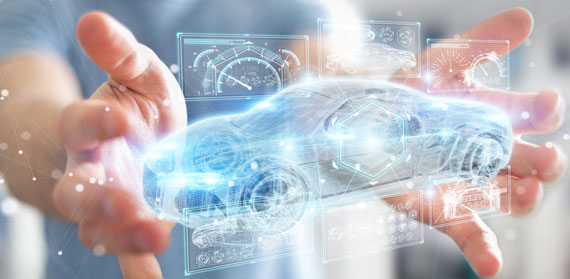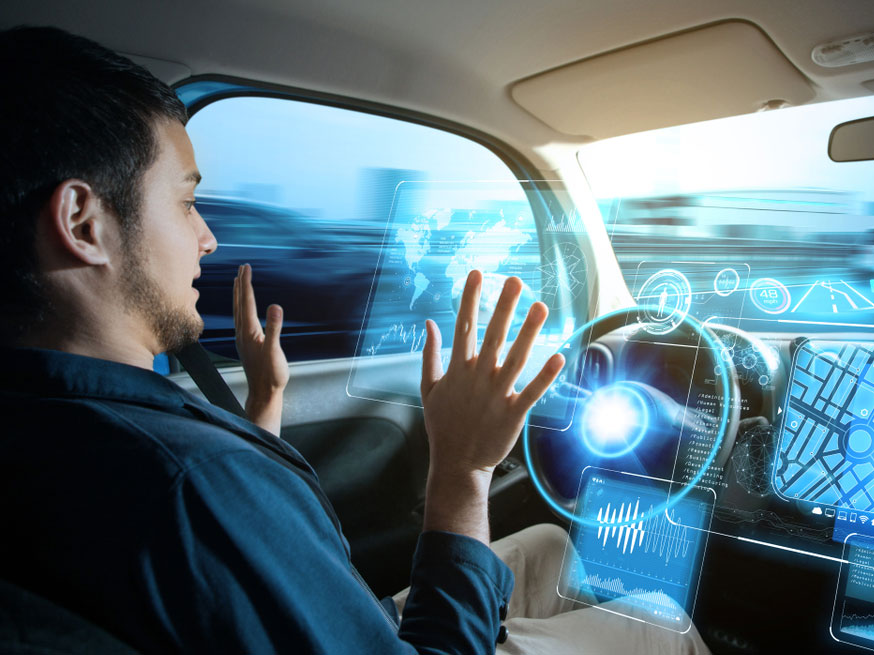Shutterstock
Guest post by Professor Lyndon Simkin, Centre for Business in Society
The news today is that Japan’s SoftBank is putting $2.25bn (£1.7bn) into GM’s autonomous unit Cruise, which is one of the biggest single investments in self-driving technology. Separately, Google-owned Waymo says that it is buying up to 62,000 Fiat Chrysler minivans for its autonomous fleet, while Uber suggests that it may work with Waymo on self-driving technology. General Motors and Fiat Chrysler both want to be a part of this future face of the automotive sector, not to be left behind by new entrants such as Tesla or Google. The SoftBank deal saw GM’s shares jump more than 10%, which is the biggest one-day gain since the company re-listed on Wall Street after its 2009 bankruptcy. It is reported that SoftBank will take a 19.6% stake in Cruise (http://www.bbc.co.uk/news/business-44325629, June 1 2018). The partnership values Cruise at $11.5bn, a triumph for GM which was criticised for over-paying when it bought the start-up two years ago for $1bn.
Inspired and forward-thinking investment or is this high-risk and wishful thinking?
There are strong advocates for this technological break-through and with so many active players there can be little doubting the likelihood of these vehicles coming to market.
First, however, there is the technology issue. Many autonomous vehicles already are successfully deployed daily in routine activities, in mines and quarries, on farms, on construction sites. And many well-known and start-up brands are being tested on public streets daily, including here in Coventry. Nevertheless, the frequently publicised ‘incidents’ and crashes, including sadly fatalities, reveal that we are a long-way from having a safe and reliable market-ready proposition.
Shutterstock
Ponder what is involved…. The sensors, the software, the computer decision-making, the required communications, and so forth. And then consider your own use of your gadgets. You Google something on your iPhone and near-instantly have your response, guiding you in your decision-making and life. You log-on to your laptop or desktop and right away you are on with your tasks. You relax in front of a set-top box or satellite system and instantly are engrossed in your programme. You remotely turn-on your central heating or some other domestic device, arriving home and all is as expected.
Except that is not always the case is it? Most days my smartphone first thing in the morning provides the latest news update, but now and again it fails to connect. Yesterday my shiny new office desktop failed to respond for many minutes and required a very long ponder before hooking me to the desired intranet packages I needed to access there and then. And last night storms interfered with all my family’s viewing habits, whether via a dish or router. These momentary technology failings were frustrating and quickly addressed. None was life or death. Such every-day glitches had no unintended consequences other than my annoyance.
“The sensors of a self-driving Uber car spotted a pedestrian pushing a bicycle across the road six seconds before killing her, according to a report. The on-board identification system classified her as an “unknown object, as a vehicle, and then as a bicycle”.
The car slowed slightly but failed to avoid Elaine Herzberg, 49, of Tempe, Arizona, or perform an emergency stop. And the car’s human operator took control a second before impact but did not hit the brake until just after.”
“Uber car ‘had six seconds to respond’ in fatal crash”, BBC News, May 24 2018; http://www.bbc.co.uk/news/technology-44243118.
Such glitches at 40 or 70 mph, if the technology my autonomous car depended on for perfect functionality and safe passage momentarily failed to respond, would have far more devastating outcomes.
So, if I still cannot depend on perfect performance from my smartphone, broadband or viewing platforms, how can I expect to have 100% performance from an autonomous vehicle? Until I can reasonably expect a zero-failure rate, am I really trusting my life and the lives of my family to such innovative technology? No. So, second, there is the consumer response and acceptance issue to consider.
Some might, though, be so trusting. In all markets, there are the innovators, risk-takers and very early adopters amongst consumers, who ‘must have’ the latest break-through product or service, are excited by its possibilities, or for self-status need to be seen using such a new product. The rush by some for space tourism proves this.
Softbank and others investing in autonomous vehicles hope that the latter group of innovators and early adopters will soon be offered reliable vehicles and that this market will rapidly take-off. They want to be on this journey, maximising their returns and being part of this revolution in our driving behaviours and mobility solutions. The occasional high-profile product failure, however, will make this an unlikely prospect. Let’s hope that these businesses do not fail to understand and to take account of the consumer’s role in this journey.
DARN IT… my touch screen just capitalised everything in error. Technology!





Comments are disabled